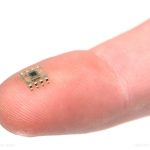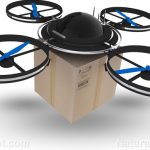
Quadbike flying drone announced that carries a human passenger to heights of 3,000 feet
Thursday, June 29, 2017 by Earl Garcia
http://www.futuresciencenews.com/2017-06-29-quadbike-flying-drone-announced-that-carries-a-human-passenger-to-heights-of-3000-feet.html

Neva Aerospace is slated to introduce its new fully-electrical, flying quadbike called AirQuadOne later this month. The concept drone could be used in a variety of applications such as personal transportation and replacement for cranes and helicopters or emergency cars. AirQuadOne is set to be manufactured using recycled carbon, and will be produced as manned and unmanned versions. The concept drone is also expected to be compatible with electric car charging stations, either through direct wire connection or induction or via a battery pack switch.
The company is currently working with regulators and pilots to attain a ‘Light Aircraft’ certification with the U.S. and the E.U. The AirQuadOne will be unveiled at the International Paris Air Show. The event is set to take place at the Le Bourget airport between June 23 and June 25, 2017.
According to Neva Aerospace Co-Founder and Chairman F.M. Robert Vergnes, the company has been working on the aircraft’s concept since 2013. However, the company decided to wait until its static thrust technology was proven before introducing the concept. “This is an exciting use of our principles for 3D distributed propulsion with electric turbines. This approach provides safety and control through redundancy. The only limitation we have today is the current limitation of the battery technology available. The next steps for us will be ensuring redundancy in flight controls and energy sources,” Professor David Brotheron-Ratcliffe, company co-founder and chief science officer, stated in DailyMail.co.uk.
Specifications of the AirQuadOne flight craft
According to the company’s website, AirQuadOne is expected to weigh around 500 kilograms. Neva Aerospace’s static thrust and semi-dynamic electric turbofans are expected to enable the flight craft to carry projected payloads of up to 100 kg. The vertical take-off and landing aircraft is also expected reach altitudes of up to 3,000 feet, and fly at speeds of up to 80 km/hr. The concept drone is expected to fly for 20 to 30 minutes.
However, a hybrid version of AirQuadOne is anticipated to have an increased flight time of around 60 minutes based on current battery technology. The company announced that research and development teams in the U.K. and Germany are working to achieve the expected output.
The AirQuadOne is expected to have 24/7 traffic management support when flying. The flight craft is also projected to use emergency satellite communication connection. Neva is projected to eventually add a small engine to run a generator to extend the flight craft’s range.
Still according to Neva’s website, the aircraft can be used in a number of applications including: extreme sports and leisure, active defense and robotic maintenance as well as in-city parcel transportation and heavy static heavy lift. As such, the company anticipates that AirQuadOne will be patronized by various customers such as private pilots, extreme sports enthusiasts, transport companies and private and public security forces.
Flying car concepts gain greater industry focus
Neva Aerospace’s AirQuadOne is only the latest in a slew of flying car concepts that have been introduced over the past few years. Wired.com reported that Airbus is currently working on its concept flight craft Vahana, and its modular flying car Pop.Up. Additionally, Google cofounder Larry Page is now involved in the production of Flyer, the company’s concept flight craft. In addition, Uber announced in April that it’s planning to launch flying cars in Dubai within three years.
According to Wired, innovations in battery technology may enable more energy to be stored into smaller and lighter packages, while advances in material development may help designers come up with lightweight and sturdy structures. However, the website noted that not all publicly-introduced designs could be realistically manufactured.
Sources include:
Tagged Under: Tags: drones, flying cars, Neva Aerospace





